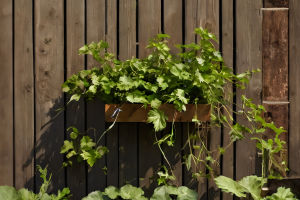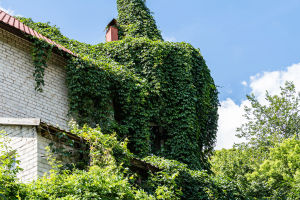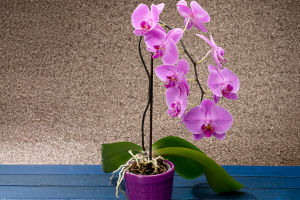Perfect Soil Plants
Starting a garden can be an exciting adventure, but choosing the right plants can often feel like a daunting task. One of the most important factors to consider when selecting plants is your garden soil.
Soil type plays a critical role in determining the health and growth of plants, as different plants thrive in different soil conditions.
In this article, we will guide you through the process of choosing the right plants for your garden soil so you can enjoy a lush, thriving garden.
Understanding Your Soil Type
Before we dive into which plants to choose, it's essential to understand your garden's soil type. The three main types of soil are sandy, clay, and loamy.
• Sandy soil is light, well-draining, and often low in nutrients. It warms up quickly in the spring but can dry out fast.
• Clay soil is dense, heavy, and retains moisture well, but it can be slow to warm up and may become compacted. It also holds more nutrients than sandy soil.
• Loamy soil is a mixture of sand, silt, and clay, and is considered the ideal soil type for most plants. It drains well, retains moisture, and is rich in nutrients.
To determine your soil type, you can conduct a simple soil test by feeling the texture of the soil when it's wet or dry. Alternatively, you can purchase a soil test kit from a gardening store to measure the pH, nutrient levels, and soil texture more accurately.
Choosing Plants for Sandy Soil
If your soil is sandy, you need to choose plants that can tolerate dry conditions and poor nutrient levels. These plants typically have deep root systems that allow them to reach water and nutrients deep within the soil.
Some great options for sandy soil include:
• Lavender – Known for its drought-tolerant nature, lavender thrives in well-drained, sandy soil and adds beautiful fragrance and color to your garden.
• Coneflower (Echinacea) – These hardy flowers thrive in poor, sandy soils and attract pollinators like bees and butterflies.
• Sedum – Also known as "stonecrop," sedum is a succulent that loves dry, sandy soil and requires little maintenance.
Adding organic matter, such as compost, to sandy soil can help improve its nutrient content and moisture retention. This is especially important if you're growing plants that need a bit more support to thrive.
Choosing Plants for Clay Soil
Clay soil can be challenging due to its dense texture and tendency to become waterlogged. However, with the right plant choices, you can still have a thriving garden.
Plants that tolerate clay soil are typically adapted to wet conditions or have deep roots that can break through compacted soil. Some excellent choices for clay soil include:
• Daylilies – These plants are incredibly adaptable and can thrive in clay soil. They are perfect for adding color to your garden with minimal maintenance.
• Hostas – Known for their shade tolerance, hostas grow well in clay soil that holds moisture, making them perfect for shaded garden beds.
• Black-eyed Susan (Rudbeckia) – This perennial flower is tough and can thrive in clay soil, offering vibrant yellow blooms that last throughout the summer.
To improve clay soil, you can incorporate organic materials like compost or well-rotted manure to help loosen it and improve drainage. Raised beds or soil amendments can also provide better conditions for your plants to grow.
Choosing Plants for Loamy Soil
If you're lucky enough to have loamy soil, you have a wider range of plant options because loam is considered the "ideal" soil for most garden plants. It is nutrient-rich, drains well, and retains moisture without becoming soggy.
For loamy soil, you can grow almost anything! Some popular plants for loamy soil include:
• Tomatoes – These sun-loving vegetables thrive in loamy soil, as it provides the nutrients and drainage they need to produce fruit.
• Roses – Loamy soil provides the perfect environment for roses, allowing them to grow healthy and bloom beautifully throughout the season.
• Carrots – Carrots do well in loamy soil because it's soft enough for their roots to grow straight and deep, ensuring a good harvest.
Even though loamy soil is ideal, it's still important to add organic material regularly to keep it rich in nutrients and to maintain soil structure. Organic mulches or compost are great ways to support the soil's health and keep it balanced.
How to Improve Soil for Specific Plants
Sometimes, your soil may not be perfect for the plants you want to grow, but don't worry—there are ways to improve it. If you have poor soil conditions, you can amend it to make it more suitable for the plants you love.
• For sandy soil: Add organic matter such as compost or peat moss to help retain moisture and nutrients.
• For clay soil: Improve drainage and structure by adding compost, sand, or gypsum. Raised beds also work well to prevent waterlogging.
• For acidic or alkaline soils: Some plants prefer certain pH levels, so adjusting your soil's pH with lime (for acidic soil) or sulfur (for alkaline soil) can help.
When amending soil, always test the soil first to avoid over-correcting or making the conditions worse.
Conclusion: Make the Right Choice for a Thriving Garden
Choosing the right plants for your garden soil is essential to creating a thriving and sustainable garden. By understanding your soil type and selecting plants that are well-suited to those conditions, you can ensure that your garden will flourish year after year. Whether you have sandy, clay, or loamy soil, there are plenty of plant options available to suit your space.
Before you start planting, take the time to test and improve your soil. Incorporating organic matter and making minor adjustments to your garden's soil conditions will go a long way in helping your plants thrive.
We hope you're inspired to get started on your gardening journey. What plants have you chosen for your garden? Feel free to share your experiences and tips with us in the comments!
-
 Climbing Wonders of NatureEver wondered how vines scale walls with such natural grace and charm?
Climbing Wonders of NatureEver wondered how vines scale walls with such natural grace and charm? -
 Water's Climb to the TopHow do plants pull water upward—without pumps or muscles?
Water's Climb to the TopHow do plants pull water upward—without pumps or muscles? -
 Orchid Pot GuideWant Gorgeous Orchids at Home? Discover How Simple It Is to Grow Stunning Blooms in Just a Flower Pot!
Orchid Pot GuideWant Gorgeous Orchids at Home? Discover How Simple It Is to Grow Stunning Blooms in Just a Flower Pot!
Copyright © zogu 2021 - 2025. All Right Reserved.